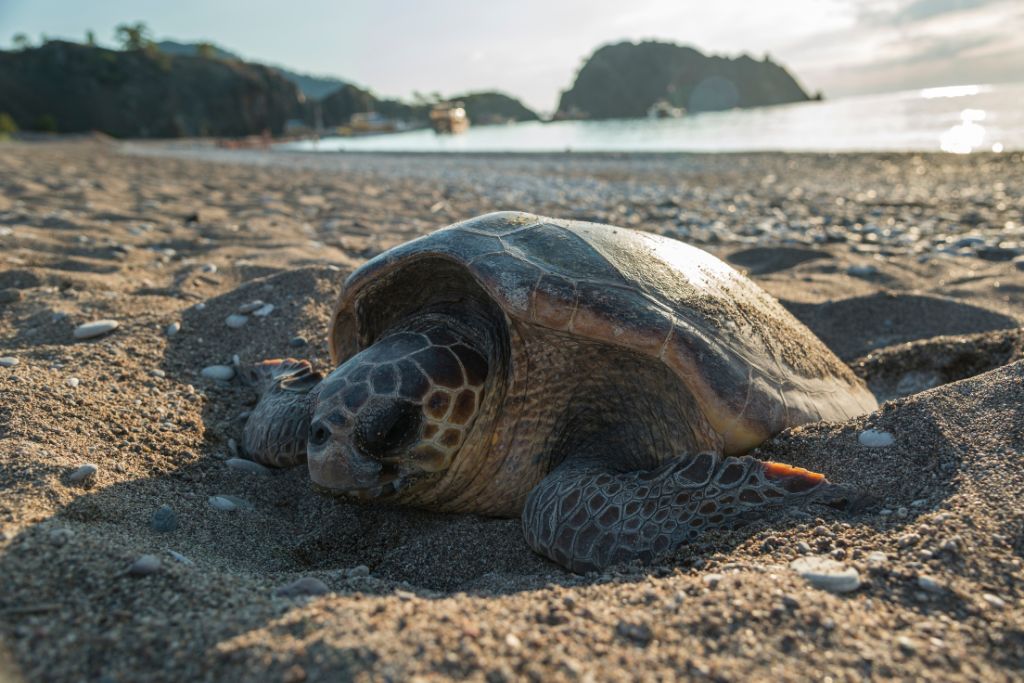The amazing tenacity and resilience that sea turtles exhibit in the face of a changing environment and climate make them not simply stunning animals. These are some of the most fascinating facts about sea turtles, which we are sharing to commemorate and emphasize their significance.
—
1. Sea Turtles Have a 50-year lifespan
Scientists discovered that sea turtles' life spans are comparable to those of humans, even though it is challenging to determine the exact age of any animal. Some marine species develop over two to three decades and continue to reproduce actively for another ten years. However, the most reliable estimate indicates that certain sea turtles can live up to 80 years.
2. The gender of sea turtles is influenced by sand temperature
Since sea turtle eggs can't survive underwater, they are laid in nests that are dug out of the sand by the turtles' rear flippers. Turtles typically lay 100 to 125 eggs at a time, and they build nests numerous times over months. The sand temperature is crucial because it affects the sex of the hatchlings. While females are frequently produced in warmer sand, men are typically produced in cooler incubation conditions. Variations in temperature during the two-month incubation period may lead to a mixture of male and female turtles.
3. During their lifetimes, sea lions travel hundreds of miles.
Male and female sea otters both travel great distances to nesting sites throughout their lifespan from the open ocean. For instance, the leatherback turtle can traverse the Pacific Ocean for up to 16,000 kilometers (10,000 miles) annually. Loggerhead turtles have been seen traveling from Baja to Japan, a distance of almost 13,000 kilometers (8,000 miles). Other species, including olive Fitz turtles and sea turtles, prefer to remain local, traveling significantly shorter distances during their migratory.
4. Sea Turtles Are Essential For Maintaining Ocean Ecosystems Around the World
Sea turtles minimize overgrowth on coral reefs by grazing on seagrass beds and sea sponges, which enhances current flows, produces more nitrogen and encourages the development of a diverse range of flora and fauna. Some sea turtles also feed on jellyfish and crustaceans, which helps to keep their populations in check.
They support a healthy food chain by holding on to barnacles, algae, and other microscopic organisms, which in turn provide food for other fish. Due to their migratory habits, sea turtles may carry nitrogen, phosphorous, and potassium from the waters to the beaches they nest on. These positive feedback loops and the recycling of nutrients are essential for marine environments.
5. Since sea turtles cannot retract inside their shells, they are more vulnerable.
The shell, which evolved from the ribs into an external bone covered in thick skin, is a component of the turtle's spine. Sea turtles can't pull their paddle-shaped flippers back into their shells like other species can. These species are more exposed to predators like tiger sharks and killer whales as well as feral dogs, seagulls, and raccoons who usually consume eggs and nestlings because they cannot completely hide in their shells, even though their shells protect them from assaults and abrasion
Human activities put sea turtles in danger as well. For instance, beach development limits the number of ideal locations for sea turtle nests. Furthermore, urban annoyances like noise and light can frighten them away from their nesting locations. Sea turtles frequently perish after consuming or becoming caught in plastic packaging, making trash another major issue. However, fishing-related threats are the most serious. They frequently perish after becoming ensnared in large commercial fishing nets because they cannot survive for long periods.

6. Only 6.5 million sea turtles are left in the wild.
Although it is very difficult to determine the precise number of sea turtles still living in the wild, scientists believe there are roughly 6.5 million of them. The vast majority of sea turtle species are classified as being extinct or critically extinct, and the number of survivors varies greatly. For instance, the number of critically endangered hawksbill turtles worldwide may be as low as 57,000. As few as 10,000 Kemp's ridleys are thought to still be alive, even though they are considered severely endangered due to the effects of climate change and human activity.
7. Despite the Covid-19 Pandemic, endangered sea turtles in Florida thrived.
Nearly 400,000 sea turtle nests were counted along Florida's coastline during the nesting season the year preceding the epidemic. In general, only one in 1,000 hatchlings survives, and the number of mortality on well-known tourist beaches is significantly greater. However, in 2020, marine scientists in Florida discovered that Covid-19 limitations that have kept people and hazardous waste off beaches had benefited the state's vulnerable flatback sea turtles.



0 Comments